#made in 1883 by auguste renoir
Text
Suzanne Valadon (French, 1865-1938)
Jean Fabris • Suzanne Valadon • c. 1885 • age 20 • Photograph.

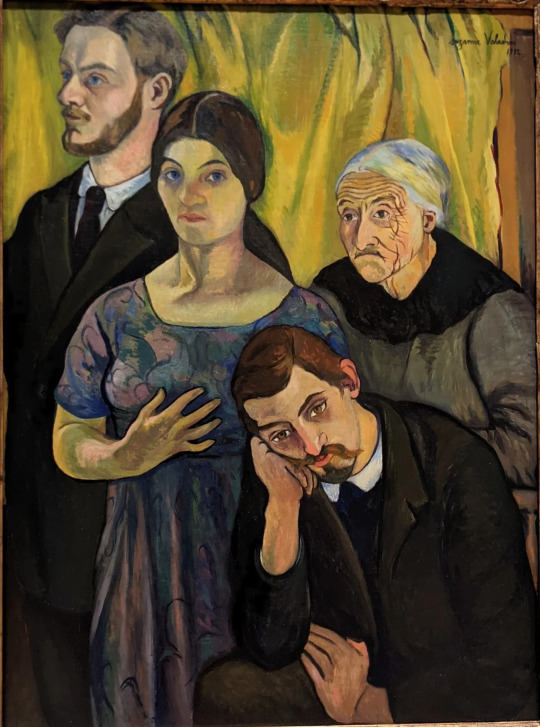
Suzanne Valadon (French, 1865-1938) • Family Portrait • 1912 • Musée d’Orsay
Suzanne Valadon led a fascinating life. As the young child of a poor woman living in Montmartre, she took an interest in the paintings of the local artists. Poverty made it out of the question she would be able to pursue becoming an artist. To earn a living, she made and sold funeral wreaths and vegetables. Then, at the age of 15, she joined the circus as an acrobat, a job she loved. An injury would not allow her to continue performing. She then put herself to work as an artist's model. She is one of a scant few artist's models to be easily recognized in the paintings she sat for. Among the artists who painted her were Renoir, Toulouse-Lautrec, and Berthe Morisot.

Pierre Auguste Renoir (French, 1841–1919) • La natte (The Braid) • 1886-87 • Museum Langmatt, Baden, Switzerland
Valadon began sketching as a young child and continued during the period she worked as an artist's model. Always paying careful attention to the artists at work, she was beginning to learn to paint. One day Edgar Degas saw her work and encouraged her to keep drawing.

In 1883, Valadon painted the above self-portrait in pastel.
As a model, Valadon went by the name Maria before being nicknamed "Suzanne" by her friend Toulouse-Lautrec. Rumors swirled around Valadon. One such was that she had an affair with Toulouse-Lautrec. Another rumor was that Renoir was the father of her son, Maurice, born in 1883. Renoir denied the allegation. It is documented that Suzanne had a torrid affair with the composer Erik Satie. Because she led an unconventional life and was not bound by strict adherence to the mores of her time, Suzanne Valadon developed a reputation in Paris. A Parisian art expert once remarked that Suzanne was ‘an excellent instinctive artist and a bit of a prostitute'. To illustrate how little respect women of the time recieved, Renoir once wrote to a friend that: “I think of women who are writers, lawyers and politicians as monsters, mere freaks . . . the woman artist is just as ridiculous.” Untraditional women were "whores" and talented women were monsters. According to these men, Suzanne Valadon was both despite her tremendous talent.

Femme à la contrebass, painted in 1908, is one of Valadon's earliest oil paintings. Though she would continue to draw in charcoal and pastel, her painting technique had started to improve and took on characteristics of a signature style.
As Valadon's painting career progressed, she painted quite a few female nudes. Perhaps because of her experiences as a model and her instincts as a woman, she painted the female body very differently than her male contemporaries. Her nudes were far less stylized and sexualized. Valadon painted her nudes with body hair and flabby thighs and they certainly had an air of confidence that was expertly portrayed to the canvas.
In 1911, the first solo exhibition of the work of Suzanne Valadon was held at the Galerie Clovis Sagot.

Nu au canapé • 1920

Young Girl in Front of a Window • 1930 • San Diego Museum of Art
An example of Suzanne Valadon's mature style, painted eight years before her death.
Sources:
Interlude
Literary Hub
Wikiart
Aware; Suzanne Valadon
The Art Stort
#art#painting#fine art#art history#suzanne valadon#woman artist#artist's model#post-Impressionism#valadon bio#art nude#renoir#toulouse-lautrec#french artist#maurice utrillo#late 19th-early 20th century european art
24 notes
·
View notes
Photo


#stylesupdated#1dsource#hlcreators#harry styles#golden#fine line#this is one of my favorite paintings ♡#and i know it's doesn't necessarily go with the line#but i wanted to make another one of those!!!#the painting is: collines autour de la baie du moulin huet - guernesey#made in 1883 by auguste renoir#*#lt#my edit#art*
394 notes
·
View notes
Text
Nude Masterpieces: Famous Painters, Egyptian, Greek, Roman Art, A4 Color Print
https://www.etsy.com/fr/listing/1136308340/chefs-douvre-de-nus-peintres-connus-art
A complete set of unused, but canceled, stamps issued by Equatorial Guinea in 1975 is the source of this publication.
It concerns well-known painters, or works found over the centuries:
we find in the order of the stamps:
0.05 e. Egyptian art: three musicians - tomb of Nakht, Thebes
0.10 e. Greek art: pottery - naked woman at the toilet
0.15 e. Pompeian fresco, the three graces 1st century BC
0.20 e. Indian art: cave painting from Ceylon, the girl with golden skin 5th century
0.25 e. Hugo Van Der Goes: Adam and Eve in Paradise 1479
0.30 e. Albrecht Dürer: The Suicide of Lucretia 1518
0.35 e. Johann Liss: Venus in the mirror, toilet
0.40 e. aesthetics of Indian miniature art: the woman on the terrace 1700
0.45 e. Laville Leroulx, F. Benoist: Portrait of a Black Woman 1800s
0.50 e. Pierre Auguste Renoir: Naked Woman in a Landscape 1883
0.55 e. Paul Gauguin: Vairumati 1897
0.60 e. Théophile Alexandre Steinlen: naked woman with a scarf 1900
1 e. Pablo Picasso: the toilet 1906
2 e. Amédéo Modigliani: standing nude, Elvira 1918
10 th. Henri Matisse: Seated Nude on a Red Background 1925
70 th. Paul Mathias Padua: naked woman
All these works are found in the montage that I offer you in two A4 prints, to which are added the pasted stamps (but protected in an envelope) with their quotations.
(stamps can be extracted with care)
You can see these 3 impressions on the first view, detailed in the views that follow.
The main characteristics of this article:
Shipping fee included
The article comes in 3 plastic pockets slipped into a rigid cardboard envelope to protect them during transport.
Letter sent by registered registered mail
A4 portrait printing on high quality photo paper (280 gsm)
multicolored
Model made as a single model at the end of the year (2021)
Can be used as WALL DECORATION with a FRAME NOT PROVIDED
(an example is shown to you in the last view: this is a Magod wooden frame, color: fine walnut with gold edge.
Can be used to enrich your collection in a binder (plastic pouch provided)
For any further information, you can of course contact me.
#Masterpiece#PabloPicasso#HenriMatisse#AlbrechtDürer#AugusteRenoir#PaulGauguin#AmédéoModigliani#NewLookPhilately#OriginalArtwork#CollectibleStamp#WallDecoration#HomemadeMontage#GiftIdeasForAll
3 notes
·
View notes
Photo

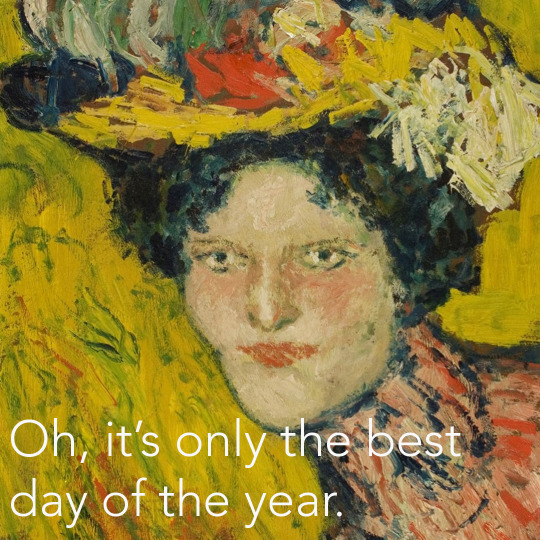

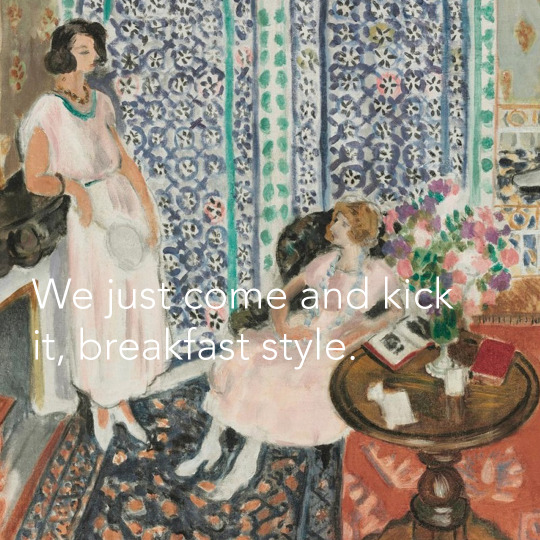
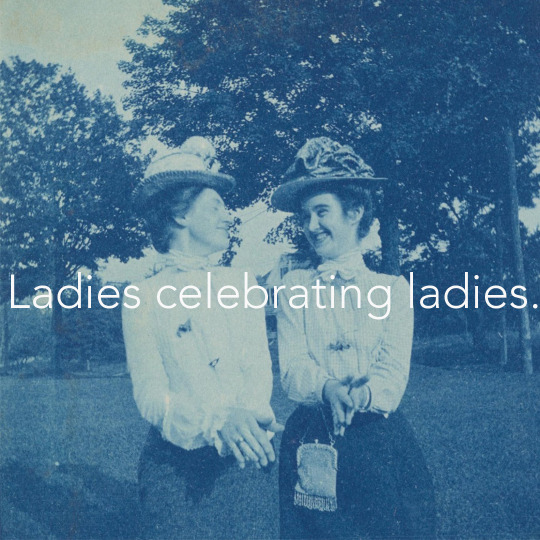
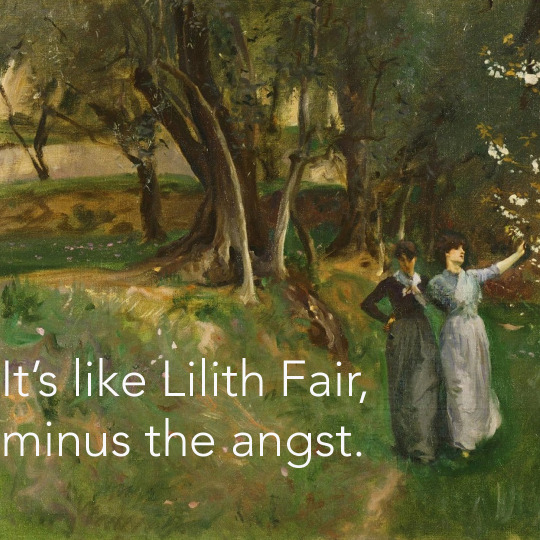

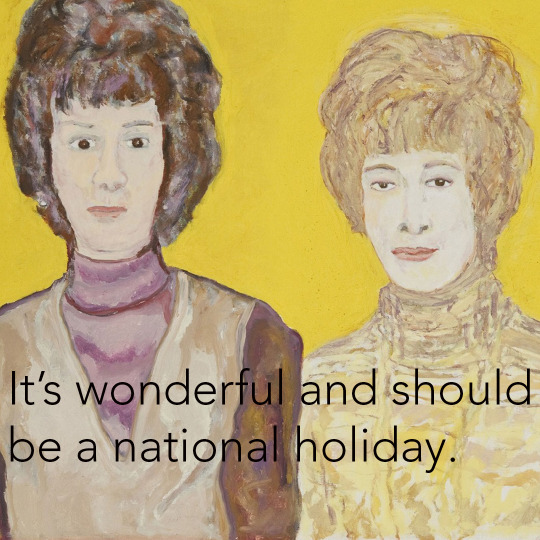
What is today you ask? Oh, it’s only the best day of the year. Happy Galentine’s Day!
"Girl Tatting," around 1906, by Pierre-Auguste Renoir
"Head of a Woman," 1901, by Pablo Picasso © Estate of Pablo Picasso / Artists Rights Society (ARS), New York
"A Woman and a Girl Driving," 1881, by Mary Cassatt
"The Moorish Screen," 1921, by Henri Matisse © Succession H. Matisse, Paris / Artists Rights Society (ARS), New York
"Untitled (Two Women Smiling)," around 1890–1910, made in the United
"Landscape with Women in Foreground," around 1883, by John Singer
"Portrait of Madame Pascin (Hermine David)," 1915–16, by Jules Pascin
"Portrait of Marian and Betty," 1970, by Beauford Delaney
#galentinesday#galentine's day#art#philadelphia#philadelphia art museum#philadelphia museum of art#philamuseum#philly
165 notes
·
View notes
Photo
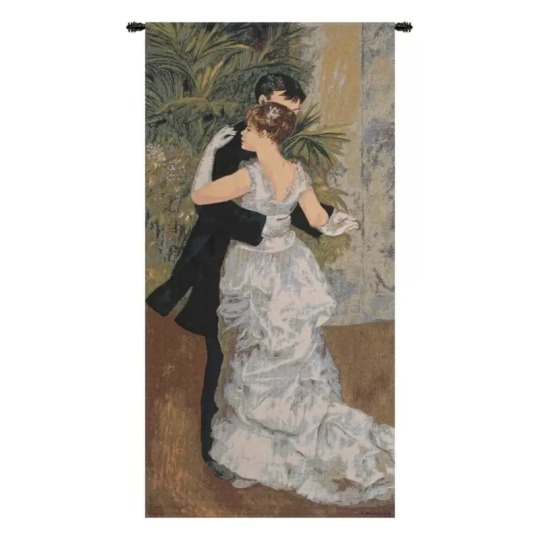
Renoir's Dance In The City is a Belgian made jacquard wall tapestry adapted from the original 1883 painting by Pierre-Auguste Renoir (1841–1919); a French artist who was a leading painter in the development of the impressionist style. The original work is now on display in the Musée d’Orsay, Paris.
Know More: - https://www.saveonwallart.com/dance-in-the-city-by-renoir-belgian-wall-tapestry-by-pierre-auguste-renoir
0 notes
Text
Renoir: The Body, the Senses

Bathers Playing with a Crab, c. 1897
"‘Renoir: The Body, the Senses,' at the Clark Art Institute, is a hedonist’s dreamland—a glorious celebration of the nude. Until now, the only place to see a major grouping of Renoir’s miraculous late nudes, those paintings made between 1885 and his death, at age 78, in 1919, was at the Barnes Foundation. Albert C. Barnes, who acquired 181 Renoirs, appreciated the astonishing achievement of these late works. In these paradoxical paintings—in which the naked bodies are monumental, as solid as oaks, yet pearlescent, translucent and shimmering; in which form and color are brought to a fever pitch; and in which Neoclassicism and Impressionism come head-to-head—Renoir sought to secure his foothold as an artist. ..."
WSJ - ‘Renoir: The Body, the Senses’ Review: Celebrating the Nude
Renoir’s Controversial Second Act
The Clark: Renoir: The Body, the Senses
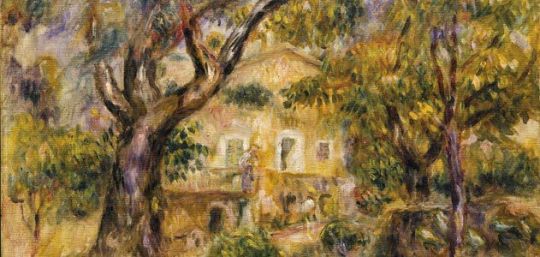
The Farm at Les Collettes, 1914
2010 February: Pierre-Auguste Renoir, 2010 July: Late Renoir, 2012 February: Renoir, Impressionism, and Full-Length Painting, 2012 September: Renoir: Between Bohemia and Bourgeoisie, 2014 December: Dance at Le moulin de la Galette (1876), 2015 June: Dance at Bougival (1883), 2015 December: Luncheon of the Boating Party (1880-81), 2019 May: View at Guernsey (1883)
0 notes
Photo

Models and Muses
Renoir and Lise Tréhot (33) - The End
Lise’s bohemian days with Renoir were already over long before December 14, 1873, the day that she gave birth to the first child that she had with her new love, the architect Georges Brière de l’Isle, with whom she would have three more children, but only married in 1883.
But, not that it is any of our business :-) ... why did Lise vanish from Renoir’s life? What happened?
Was it the incident in the summer of 1873, at the home of Charles Le Coeur, the brother of Renoir’s friend Jules, where Renoir apparently made improper advances to his host’s 14 year old daughter?
Did Lise cut off all connections with the painter to assure her bourgeois respectability in her new life as an architect’s friend and wife?
How about the impact of Renoir’s next relationship with the young actress Henriette Henriot, who for the first time posed for ‘La Parisienne’ late 1873? She became Renoir’s next favourite model and muse.
Question marks all over...
It’s a pity that, before her death, Lise destroyed all her personal documents related to her years as Renoir’s model.
Pierre-Auguste Renoir,
- Portrait de Marie Le Coeur, c. 1870. Oil on canvas, 41 x 33 cm. Musée d'Art Moderne et Contemporain, Strasbourg, France
- La Parisienne, 1874. Oil on canvas, 163.5 x 108.5 cm. National Museum of Wales, Cardiff
22 notes
·
View notes
Text
5 Quick Tips For Post Impressionism | Post Impressionism
5 Quick Tips For Post Impressionism | Post Impressionism – Oscar-Claude Monet (UK: /ˈmɒneɪ/, US: /moʊˈneɪ/, This particular language: [klod mɔnɛ]; 14 November 1840 – 5 Dec 1926) was a France painter, a founder of French Impressionist painting and the nearly all consistent and respected practitioner of the movement’s philosophy of providing one’s perceptions before nature, especially while applied to plein surroundings landscape painting. The word “Impressionism” is derived from it of his painting like a pro Impression, soleil levant (Impression, Sunrise), which has been exhibited in 1874 in the first of the actual independent exhibitions fastened by Monet and his associates as an alternative to the Salon de London.
Monet’s ambition regarding documenting the France countryside led him to adopt a method of painting the same scene many times in order to capture the changing of light and the passing of the seasons. From 1883, Monet lived in Giverny, wherever he purchased a house and property along with began a vast landscape design project which included lily ponds that would become the subjects of his or her best-known works. With 1899, he began art work the water lilies, 1st in vertical landscapes with a Japanese brdge as a central attribute and later in the compilation of large-scale paintings that is to occupy him or her continuously for the next two decades of his lifetime.
From the late 1860s, Monet and other like-minded artists met together with rejection from the old-fashioned Académie des Beaux-Arts, which held it is annual exhibition in the Salon de London. During the latter portion of 1873, Monet, Pierre-Auguste Renoir, Camille Pissarro, and Alfred Sisley organized the Société anonyme des histrion peintres, sculpteurs puis graveurs (Anonymous Culture of Painters, Sculptors, and Engravers) to indicate their artworks on their own. At their initial exhibition, held in 04 1874, Monet established the work that was to offer the group its lasting name. He was encouraged by the style in addition to subject matter of earlier modern painters Camille Pissarro and Edouard Manet.
Impression, Dawn was painted in 1872, depicting a Le Havre vent landscape. From the painting’s title the fine art critic Louis Leroy, in his review, “L’Exposition des Impressionnistes, very well which appeared throughout Le Charivari, coined the term “Impressionism”. It was intended as blur but the Impressionists appropriated the term for themselves.
Franco-Prussian War and Argenteuil
After the outbreak with the Franco-Prussian War (19 July 1870), Monet and his family got refuge in England inside September 1870, exactly where he studied the works of Ruben Constable and Frederick Mallord William Turner, both of whose scenery would serve to stimulate Monet’s innovations from the study of colour. In the spring regarding 1871, Monet’s functions were refused authorization for inclusion inside the Royal Academy convention.
In May 1871, he left Birmingham to live in Zaandam, from the Netherlands, where he made twenty-five paintings (and the police suspected your pet of revolutionary activities). He also paid out a first visit to neighbouring Amsterdam. In Oct or November 1871, he returned in order to France. From Dec 1871 to 1878 he lived in Argenteuil, a community on the right lender of the Seine sea near Paris, along with a popular Sunday-outing destination for Parisians, where he / she painted some of his / her best-known works. Within 1873, Monet obtained a small boat outfitted to be used as a floating studio. From the motorboat studio Monet decorated landscapes and also image of Édouard Manet and his wife; Manet in turn depicted Monet painting aboard the sevyloyr fish hunter 360, accompanied by Camille, within 1874. In 1874, he briefly returned to Holland.
Post-Impressionism | art | Britannica.com – post impressionism | post impressionism
5 Quick Tips For Post Impressionism | Post Impressionism – post impressionism
| Encouraged to my own weblog, within this time I’ll explain to you with regards to keyword. And after this, this can be the initial picture:
Post Impressionism Definition and Post Impressionism … – post impressionism | post impressionism
Think about image previously mentioned? can be in which wonderful???. if you feel and so, I’l l explain to you many image once again beneath:
Post Impressionism Definition and Post Impressionism … – post impressionism | post impressionism
So, if you wish to have all of these amazing shots about (5 Quick Tips For Post Impressionism | Post Impressionism), simply click save button to save the images in your computer. These are all set for obtain, if you want and want to get it, click save symbol on the page, and it will be instantly saved in your notebook computer.} As a final point if you would like gain new and the recent graphic related with (5 Quick Tips For Post Impressionism | Post Impressionism), please follow us on google plus or book mark this blog, we try our best to present you regular up grade with fresh and new graphics. Hope you enjoy keeping here. For some upgrades and recent news about (5 Quick Tips For Post Impressionism | Post Impressionism) graphics, please kindly follow us on twitter, path, Instagram and google plus, or you mark this page on bookmark section, We attempt to present you up grade periodically with fresh and new pics, enjoy your browsing, and find the ideal for you.
Post-Impressionism Movement Overview | TheArtStory – post impressionism | post impressionism
Here you are at our website, contentabove (5 Quick Tips For Post Impressionism | Post Impressionism) published . At this time we are delighted to declare we have found an extremelyinteresting contentto be reviewed, that is (5 Quick Tips For Post Impressionism | Post Impressionism) Lots of people trying to find details about(5 Quick Tips For Post Impressionism | Post Impressionism) and definitely one of them is you, is not it?
Special collection looks into post-impressionism – Daily Sabah – post impressionism | post impressionism
from WordPress https://paintingarta.online/5-quick-tips-for-post-impressionism-post-impressionism/
0 notes
Text
5 Quick Tips For Post Impressionism | Post Impressionism
5 Quick Tips For Post Impressionism | Post Impressionism – Oscar-Claude Monet (UK: /ˈmɒneɪ/, US: /moʊˈneɪ/, This particular language: [klod mɔnɛ]; 14 November 1840 – 5 Dec 1926) was a France painter, a founder of French Impressionist painting and the nearly all consistent and respected practitioner of the movement’s philosophy of providing one’s perceptions before nature, especially while applied to plein surroundings landscape painting. The word “Impressionism” is derived from it of his painting like a pro Impression, soleil levant (Impression, Sunrise), which has been exhibited in 1874 in the first of the actual independent exhibitions fastened by Monet and his associates as an alternative to the Salon de London.
Monet’s ambition regarding documenting the France countryside led him to adopt a method of painting the same scene many times in order to capture the changing of light and the passing of the seasons. From 1883, Monet lived in Giverny, wherever he purchased a house and property along with began a vast landscape design project which included lily ponds that would become the subjects of his or her best-known works. With 1899, he began art work the water lilies, 1st in vertical landscapes with a Japanese brdge as a central attribute and later in the compilation of large-scale paintings that is to occupy him or her continuously for the next two decades of his lifetime.
From the late 1860s, Monet and other like-minded artists met together with rejection from the old-fashioned Académie des Beaux-Arts, which held it is annual exhibition in the Salon de London. During the latter portion of 1873, Monet, Pierre-Auguste Renoir, Camille Pissarro, and Alfred Sisley organized the Société anonyme des histrion peintres, sculpteurs puis graveurs (Anonymous Culture of Painters, Sculptors, and Engravers) to indicate their artworks on their own. At their initial exhibition, held in 04 1874, Monet established the work that was to offer the group its lasting name. He was encouraged by the style in addition to subject matter of earlier modern painters Camille Pissarro and Edouard Manet.
Impression, Dawn was painted in 1872, depicting a Le Havre vent landscape. From the painting’s title the fine art critic Louis Leroy, in his review, “L’Exposition des Impressionnistes, very well which appeared throughout Le Charivari, coined the term “Impressionism”. It was intended as blur but the Impressionists appropriated the term for themselves.
Franco-Prussian War and Argenteuil
After the outbreak with the Franco-Prussian War (19 July 1870), Monet and his family got refuge in England inside September 1870, exactly where he studied the works of Ruben Constable and Frederick Mallord William Turner, both of whose scenery would serve to stimulate Monet’s innovations from the study of colour. In the spring regarding 1871, Monet’s functions were refused authorization for inclusion inside the Royal Academy convention.
In May 1871, he left Birmingham to live in Zaandam, from the Netherlands, where he made twenty-five paintings (and the police suspected your pet of revolutionary activities). He also paid out a first visit to neighbouring Amsterdam. In Oct or November 1871, he returned in order to France. From Dec 1871 to 1878 he lived in Argenteuil, a community on the right lender of the Seine sea near Paris, along with a popular Sunday-outing destination for Parisians, where he / she painted some of his / her best-known works. Within 1873, Monet obtained a small boat outfitted to be used as a floating studio. From the motorboat studio Monet decorated landscapes and also image of Édouard Manet and his wife; Manet in turn depicted Monet painting aboard the sevyloyr fish hunter 360, accompanied by Camille, within 1874. In 1874, he briefly returned to Holland.
Post-Impressionism | art | Britannica.com – post impressionism | post impressionism
5 Quick Tips For Post Impressionism | Post Impressionism – post impressionism
| Encouraged to my own weblog, within this time I’ll explain to you with regards to keyword. And after this, this can be the initial picture:
Post Impressionism Definition and Post Impressionism … – post impressionism | post impressionism
Think about image previously mentioned? can be in which wonderful???. if you feel and so, I’l l explain to you many image once again beneath:
Post Impressionism Definition and Post Impressionism … – post impressionism | post impressionism
So, if you wish to have all of these amazing shots about (5 Quick Tips For Post Impressionism | Post Impressionism), simply click save button to save the images in your computer. These are all set for obtain, if you want and want to get it, click save symbol on the page, and it will be instantly saved in your notebook computer.} As a final point if you would like gain new and the recent graphic related with (5 Quick Tips For Post Impressionism | Post Impressionism), please follow us on google plus or book mark this blog, we try our best to present you regular up grade with fresh and new graphics. Hope you enjoy keeping here. For some upgrades and recent news about (5 Quick Tips For Post Impressionism | Post Impressionism) graphics, please kindly follow us on twitter, path, Instagram and google plus, or you mark this page on bookmark section, We attempt to present you up grade periodically with fresh and new pics, enjoy your browsing, and find the ideal for you.
Post-Impressionism Movement Overview | TheArtStory – post impressionism | post impressionism
Here you are at our website, contentabove (5 Quick Tips For Post Impressionism | Post Impressionism) published . At this time we are delighted to declare we have found an extremelyinteresting contentto be reviewed, that is (5 Quick Tips For Post Impressionism | Post Impressionism) Lots of people trying to find details about(5 Quick Tips For Post Impressionism | Post Impressionism) and definitely one of them is you, is not it?
Special collection looks into post-impressionism – Daily Sabah – post impressionism | post impressionism
from WordPress https://paintingarta.online/5-quick-tips-for-post-impressionism-post-impressionism/
0 notes
Photo
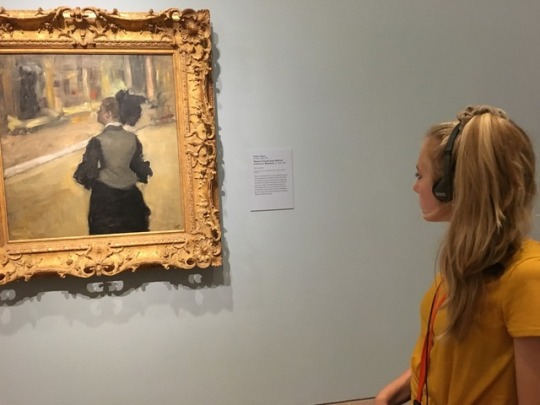

Degas, Impressionism, and the Paris Millinery Trade
Do you know where the term Mad Hatter from Alice in Wonderland is from? The history behind that term dates back to the time when hats were highly fashionable in Paris, France during the Impressionist Art Period. To make the felt for hats, the workers used the chemical, mercury. The long exposure to mercury caused damage to the central nervous system and made the hat makers go crazy. The term “Mad as a Hatter” was coined and then shortened to the Mad Hatter in the novel, Alice in Wonderland. I learned the story of where the term Mad Hatter came from when I viewed the Palace of Legion of Honor, a fine arts museum in San Francisco. In this museum, I went to the Degas, Impressionism, and the Paris Millinery Trade exhibition. The featured artists of this show were Edgar Degas, Mary Cassatt, Édouard Manet, Pierre-Auguste Renoir, and Henri de Toulouse-Lautrec. The Millinery Trade in Paris, France from 1875 to 1914 is highlighted in this show. The Millinery Trade is about high-fashion hats and the women who created them (Legion of Honor). In this multimedia exhibition, there are paintings, displays of hats from the period, audio clips, and short films of women wearing the hats. Oil on canvas, lithograph posters, and pastel on paper were the primary works of art.
In Degas’ show, there were many things that I liked, but there were also things I did not like. I enjoyed that there were some artworks that had audio, so I learned the history behind that painting. There were also displays of hats from the period which was very interesting. The hats were in all different sizes, colors, and all with exotic accessories, like feathers, flowers, and ribbons. In the museum, that were also films of women wearing the hats, and there were information boards that explained the culture of hat making and hat wearing. I mainly liked everything in the Palace of Legion of Honor, but there were a few things that I disliked. I did not like that there was no audio for all the paintings. I wanted to learn the background of some of the artworks that didn’t have audio. Also, I did not like that there were no photographs of the artists, whose work was on exhibit.
The painting called “Shop Girl” caught my eye. In the audio clip I heard, it mentioned that the shop girl wasn’t only selling the fabric. She was also selling herself. “Shop Girl” was created with oil on canvas and was painted by James Tissot. James Tissot was a French artist, who lived from 1836-1902. It took Tissot two years to create this painting, from years 1883-1885. The painting focuses on a young woman (shop girl) in a store, and she is holding some light pink fabric, possibly for making hats. Her eyes are looking straight forward, making eye contact with the viewer. She is also holding the door open for someone who is not in the painting. The woman is wearing a long, black dress. She is white, with brown curly hair that is pinned to her head. In the shop, there are piles of pink and blue ribbons on the tables. On the ground, there is some pink ribbon in the shape of a heart. There is another woman in the shop, and she is putting a box onto a shelf. In the background, there is a busy street, and outside the shop, there is a formally dressed man looking in the window. His eyes are focused on the breasts of the woman, who is putting a box onto a self. Tissot uses the strokes from his paintbrush to make the painting look textured. It made an impact on me because even in that time, women still had to sell themselves with their body shape and looks since Tissot highlighted their breasts in the painting. Today, women still sell themselves, in stores and online.
The Degas, Impressionism, and the Paris Millinery Trade gallery was impactful, because of the interesting art I saw, and the history I learned. I would recommend this gallery because it highlights why hats were so important in France in the late 1880’s and early 1900’s. I thought the unusual focus on painting hats was interesting and unique. The paintings of hats made me think more about different fashion trends in different time periods. Hats were the trend in the late 1880’s and early 1900’s, just like now the trend is Instagram perfect pictures of self and friends. How did they find the antique hats that looked so similar to the ones in the paintings is something I would ask the curator, It was a quick city trip, and it was definitely worth it!
0 notes
Text
Hyperallergic: Degas and His Fascination with 19th-Century Hat Culture
Degas, Impressionism, and the Paris Millinery Trade, installation view (all images courtesy the Fine Arts Museums of San Francisco)
SAN FRANCISCO — It’s hard for a major museum exhibition to surprise us, so the fact that San Francisco’s Legion of Honor Museum does is one of the many pleasures of Degas, Impressionism, and the Paris Millinery Trade. The museum, which recently presented something fresh about Claude Monet with an exhibition showing the evolution of his style, now has something new to show us about Edgar Degas.
Woman’s hat
Best known for his paintings of dancers, Degas was also fascinated by the women in the millinery trade. This show, organized by the Fine Arts Museums of San Francisco and the Saint Louis Art Museum, is the first to detail this fascination through the paintings and pastels of Degas as well as fellow Impressionists like Mary Cassatt, Édouard Manet, and Pierre-Auguste Renoir. Along with paintings, the exhibit showcases period hats and bonnets embellished with silk flowers, ribbons, plumes, and feathers. Occasionally, a whole bird— an African starling, even an owl — sits atop a hat.
Along with showing us beautiful hats and paintings of the women who made them, the show also tells us something about the historical context of their work. One million women joined the workforce in France in the late 18th and early 19th centuries, and many of them — about 80 percent — went into the fashion industry. At the time, men and women, regardless of social class, did not go out in public without a hat, and Paris, considered the fashion capital of the world, had approximately 1,000 millinery shops. The milliners were the elite workers in the garment industry, and their jobs ranged from running errands to forming the hats to covering them with material to adding trimmings. Then there were the premières, or creative directors, who designed the hats, often with input from their clients. A few of these premières, such as Madame Virot, became millionaires. Looking at the hats in this exhibit, with their style, elegance, form, and attention to detail — such as a red and black bonnet with tiny berries or a pink and brown wool hat with velvet and ribbons — it’s easy to see why Degas considered milliners his fellow artists.
Degas, Impressionism, and the Paris Millinery Trade, installation view
Edgar Degas, “The Millinery Shop” (1879/86), oil on canvas, 39 3/8 x 43 9/16 in.
That’s the thesis of the show, Laura Camerlengo, a curator of costume and textile arts at the museum, told Hyperallergic: that milliners were artists working with straw, wool, feathers, and silk rather than paint. She thinks that showing hats and bonnets alongside the paintings helps the show come alive.
According to Camerlengo, people at the time didn’t yet know what to make of working women, and their freedom was both admired and considered threatening. Social classes came together in the millinery shops, with wealthy women spending up to 200 francs for a hat while an errand girl in the shop made maybe two francs a day
James Tissot, “The Shop Girl” (1883–85), oil on canvas, 146.1 x 101.6 cm
The show opens with a section on the emerging consumer culture in 18th-century Paris, with department stores opening competing millinery shops on the Rue de la Paix, near where Degas worked. One of the paintings in this section, James Tissot’s “The Shop Girl” (1883–85), shows us the inside of a shop, with piles of ribbons on the counter and a woman at work standing at the open door.
Another section showcases hats covered in ribbons and flowers. At the time, about 24,000 women were creating silk flowers, leaves, and ferns to adorn hats. In the gallery hangs Degas’s largest painting on this theme, “The Millinery Shop” (1879), which shows a woman sitting at a table surrounded by six hats, and in the same room a late-19th-century bonnet embellished with ribbon, bows, and silk flowers looks as though it was plucked directly from the painting.
Madame Pouyanne, woman’s bonnet
The show goes on with plumed and feathered hats, including Camerlengo’s favorite, one of the nine from San Francisco’s collection: a bonnet with sprays of light and dark brown feathers made by Madame Pouyanne, who was known, per the show’s catalogue, for her “very artistic combination of colorings.” Paintings showing similar hats hang in the same gallery, including “Portrait of Madame J (Young Woman in Black)” (1883) by Cassatt, a close friend of Degas’s, whom he often accompanied to millinery shops. The painting shows a woman in a black hat with a veil and feathers; nearby hangs Degas’s “Woman Viewed from Behind (Visit to a Museum)” (1879–85), depicting a fashionable woman in a plumed hat looking at paintings in the Louvre.
Men’s hats are represented in this show as well, such as bowlers like the one in Degas’s “Portrait of Zacharian” (1885). Top hats, which had been ubiquitous in earlier years, were considered formal wear by the 1890s. Milliners used fur and silk in top hats and straw for boaters, like one in a painting by Berthe Morisot of her husband (and Manet’s brother), “Eugène Manet on the Isle of Wight” (1875).
In the exhibit’s final section, the focus is on hats from the early 20th century (which were getting bigger and bigger) and Degas’s late millinery works, including two paintings titled “The Milliners” (1882–1904 and 1898). In the earlier work, on loan from the J. Paul Getty Museum, two women sit at a table with hats and some ribbons in front of them, and we can see how hard the millinery work was (sometimes up to 20 hours a day in peak season) in the exhausted face of the woman on the left. The other painting, from the Saint Louis Art Museum, shows two women absorbed in their work.
Edgar Degas, “The Milliners” (1898), oil canvas, 29 5/8 x 32 1/4 in.
Edgar Degas, “The Milliners” (1882–1904), oil canvas, 29 5/8 x 32 1/4 in.
In these final paintings of the exhibit, we see most clearly Degas’s empathy and regard for the milliners. When he portrays them lost in thought, it’s clear he sees them as fellow artists, struggling to create the most beautiful, inventive, and elegant work they could — just as he did.
Degas, Impressionism, and the Paris Millinery Trade, installation view
Degas, Impressionism, and the Paris Millinery Trade continues at San Francisco’s Legion of Honor Museum (100 34th Avenue) through September 24.
The post Degas and His Fascination with 19th-Century Hat Culture appeared first on Hyperallergic.
from Hyperallergic http://ift.tt/2tTHH2q
via IFTTT
0 notes
Text
Edouard Manet
Edouard Manet
Edouard Manet (born in Paris on January 23, 1832 - died in Paris on April 30, 1883) is a major French painter of the late nineteenth century. Forerunner of the modern painting he freed from academicism, Edouard Manet is wrongly considered as one of the fathers of Impressionism new techniques of color and the particular treatment of light.
It nevertheless approaches some recurring themes such as portraits, seascapes, Parisian life or even still lifes, while painting in a personal way, in a first period, scenes of genre.Refusing to study law and failing to become a naval officer, the young Edouard Manet entered the workshop of the painter Thomas Couture in 1850 where he began his training as a painter, but he left it in 1856. As early as 1860 , He presents his first paintings.
His following paintings, Lola de Valencia, Bullfighting, Lunch on the Grass or Olympia, make scandal. Manet is rejected from the official exhibitions, and plays a leading role in the "elegant bohemian". He frequented artists who admired him as Henri Fantin-Latour or Edgar Degas and men of letters such as the poet Charles Baudelaire or the novelist Émile Zola, of which he painted a still famous portrait. At that time, he painted The Fife Player (1866).
After the Franco-Prussian War of 1870 in which he took part, Manet supported the Impressionists, among whom he had close friends such as Claude Monet, Auguste Renoir or Berthe Morisot who became his sister-in-law and whose famous portrait was to be noticed. He will make her, Berthe Morisot with a bouquet of violets (1872).
At their contact, he partly left the painting of workshop for the painting outdoors in Argenteuil and Gennevilliers, where it owns a house. His palette is cleared up as Argenteuil testifies in 1874. He nevertheless retains his personal approach, made up of careful composition and concerned with reality, and continues to paint many subjects, in particular places of leisure such as Au Café (1878), La Serveuse Bocks (1879) and his last great canvas. A bar at the Folies Bergère (1881-1882), but also the world of the humble (Paveurs de la Rue Mosnier, 1878) or self-portraits (Autoportrait à la palette, 1879).
He also painted still lifes, often realized for financial reasons, but nevertheless showed the great art of the painter, who succeeded in representing flowers, fruits and vegetables in a dramatic mise en scène. Manet also made portraits of women (Nana, 1877, Blonde woman with naked breasts, 1878) or of his familiar ones like the poet Stéphane Mallarmé in 1876 or Georges Clemenceau in 1879-1880.
He became more and more recognized and received the Legion of Honor on January 1, 1882. However, victim of syphilis and rheumatism, he suffered, from 1876, his left leg that will have to amputate.
Edouard Manet died of gangrene at 51 years old in 1883 and left more than four hundred paintings, pastels, sketches and watercolors. His greatest works are now visible in all the museums of the world, especially at the Musée d'Orsay in Paris.
Some of his works
A Bar at the Folies-Bergère 1862
The Kearsarge at Boulogne1864
Lola de Valence 1862
Portrait of Monsieur and Madame Auguste Manet 1860
Ragpicker 1865–1870
from Blogger http://ift.tt/2sz60q2
via IFTTT
1 note
·
View note
Photo

For this exercise I chose Dance at Bougival by Pierre-Auguste Renoir (1883)
Musical accompaniment:
Wonderful Tonight by Eric Clapton
She by Louie Says
Listening to She while viewing this painting is a disconcerting juxtaposition. The haunting lyrics and music of the song give the frozen action of the painting a more disturbing light and causes the deep blues throughout the painting to take on a more sinister appearance.
“Bend and I’ll break you Leave and I’ll take you back again”
Every time this lyric was repeated I imagined that the man in the painting was whispering this strange warning/threat into the woman’s ear. This made him seem like a looming threat rather than a loving and even protective dance partner as may first appear.
0 notes
Text
Edouard Manet
Edouard Manet
Edouard Manet (born in Paris on January 23, 1832 - died in Paris on April 30, 1883) is a major French painter of the late nineteenth century. Forerunner of the modern painting he freed from academicism, Edouard Manet is wrongly considered as one of the fathers of Impressionism new techniques of color and the particular treatment of light.
It nevertheless approaches some recurring themes such as portraits, seascapes, Parisian life or even still lifes, while painting in a personal way, in a first period, scenes of genre.Refusing to study law and failing to become a naval officer, the young Edouard Manet entered the workshop of the painter Thomas Couture in 1850 where he began his training as a painter, but he left it in 1856. As early as 1860 , He presents his first paintings.
His following paintings, Lola de Valencia, Bullfighting, Lunch on the Grass or Olympia, make scandal. Manet is rejected from the official exhibitions, and plays a leading role in the "elegant bohemian". He frequented artists who admired him as Henri Fantin-Latour or Edgar Degas and men of letters such as the poet Charles Baudelaire or the novelist Émile Zola, of which he painted a still famous portrait. At that time, he painted The Fife Player (1866).
After the Franco-Prussian War of 1870 in which he took part, Manet supported the Impressionists, among whom he had close friends such as Claude Monet, Auguste Renoir or Berthe Morisot who became his sister-in-law and whose famous portrait was to be noticed. He will make her, Berthe Morisot with a bouquet of violets (1872).
At their contact, he partly left the painting of workshop for the painting outdoors in Argenteuil and Gennevilliers, where it owns a house. His palette is cleared up as Argenteuil testifies in 1874. He nevertheless retains his personal approach, made up of careful composition and concerned with reality, and continues to paint many subjects, in particular places of leisure such as Au Café (1878), La Serveuse Bocks (1879) and his last great canvas. A bar at the Folies Bergère (1881-1882), but also the world of the humble (Paveurs de la Rue Mosnier, 1878) or self-portraits (Autoportrait à la palette, 1879).
He also painted still lifes, often realized for financial reasons, but nevertheless showed the great art of the painter, who succeeded in representing flowers, fruits and vegetables in a dramatic mise en scène. Manet also made portraits of women (Nana, 1877, Blonde woman with naked breasts, 1878) or of his familiar ones like the poet Stéphane Mallarmé in 1876 or Georges Clemenceau in 1879-1880.
He became more and more recognized and received the Legion of Honor on January 1, 1882. However, victim of syphilis and rheumatism, he suffered, from 1876, his left leg that will have to amputate.
Edouard Manet died of gangrene at 51 years old in 1883 and left more than four hundred paintings, pastels, sketches and watercolors. His greatest works are now visible in all the museums of the world, especially at the Musée d'Orsay in Paris.
Some of his works
A Bar at the Folies-Bergère 1862
The Kearsarge at Boulogne1864
Lola de Valence 1862
Portrait of Monsieur and Madame Auguste Manet 1860
Ragpicker 1865–1870
from Blogger http://ift.tt/2sz60q2
via IFTTT
0 notes